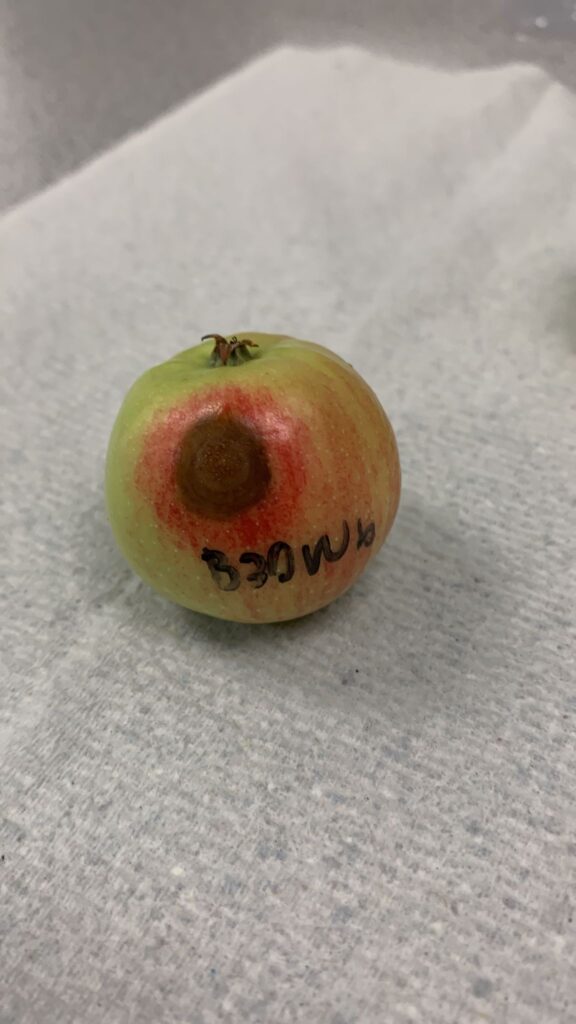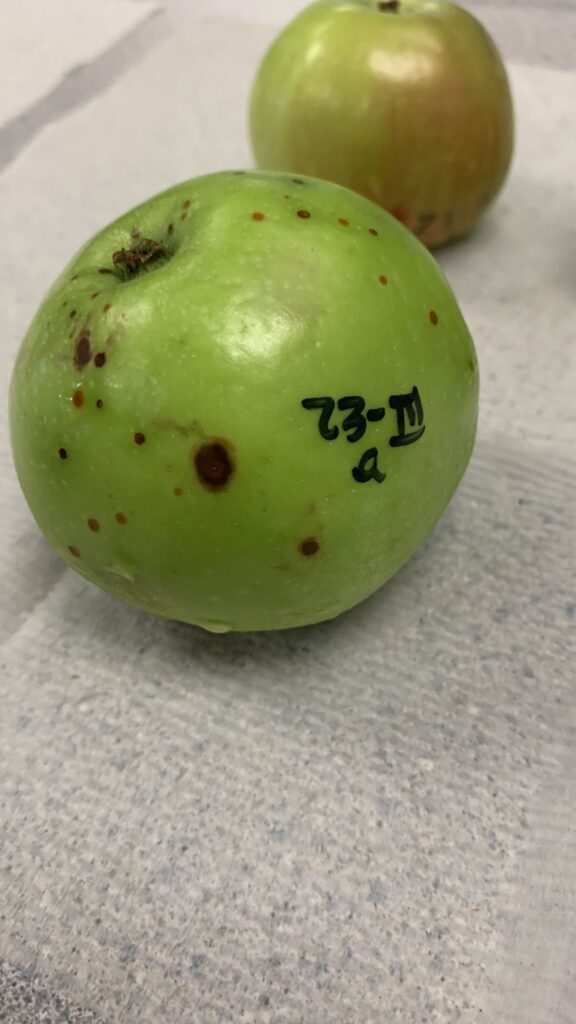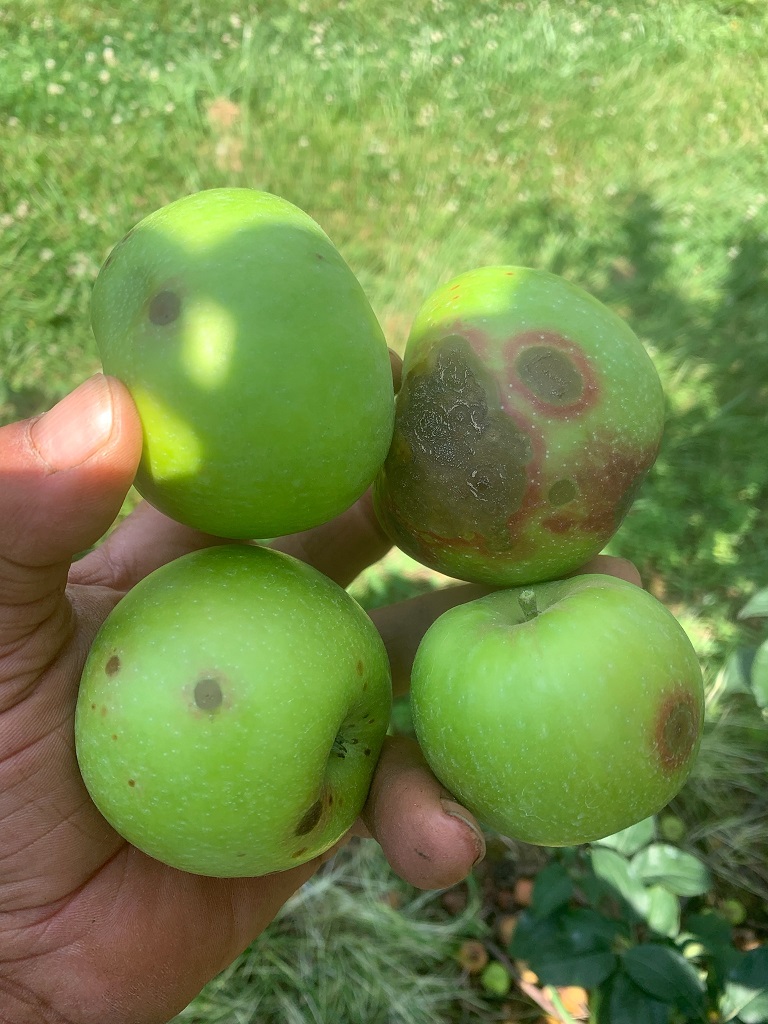First Apple Bitter Rot Symptoms in 2023 Visible in Winchester, VA and an Orchard in Maryland (Both From 5th July 2023)
First symptoms of bitter rot disease on immature fruit of apple cultivar ‘Gala’ have been found on 5 July in Winchester at AREC’s experimental Block 30W (Fig. 1, 2). We also found the bitter rot on ‘Idared’ immature fruit in our Block 30 where we are running fungicide trials for bitter rot. The rot started as small dots or dime-size spots from on fruit side (Fig. 3). Fungi we isolated from these fruits have typical colonies of Colletotrichum species, so the find is confirmed by lab work. ‘Gala’ fruit with bitter rot lesions were from fungicide unsprayed trees that only received insecticides. Finally, I received also picture of bitter rot symptoms on ‘Honeycrisp’ (Fig. 4) from Maryland. Bitter rot fungi can infect any fungicide-uncovered areas on the fruit, especially when warm wetting events occur. We have had cooler spring but in recent weeks we have had more than several of these warm and rainly periods allowing conducive conditions for infections. Extreme heat and the rain that “came” back with a vengeance these past 5 weeks have favored and will continue to extremely favor this disease to infect all the way until harvest. Hopefully you do not see bitter rot in your orchard, but start scouting for bitter rot symptoms to make sure your trees are free of this disease and to determine how good was your fungicide coverage during the early summer cover sprays. If you see bitter rot on some fruit, especially on highly valuable crop like ‘Honeycrisp’, our recommendation is to protect the whole block by immediately spray applying the full rate of captan plus higher rate of Pristine or Merivon or other QoI containing fungicides such as Flint Extra or Luna Sensation (not Sovran). We would also recommend to include a surfactant such as LI-700 to enhance fruit coverage (use low rate for better coverage only i.e. 8-16 fl oz). This will help reach fruit surfaces in dense fruit clusters with many fruit together, thus improving the fungicide coverage by penetrating in between the fruit. It will also help both to inactivate spores on the decay lesions and to protect the remaining healthy fruit from infection until they can be harvested. We warn that if fruit will be sold for pick-your-own, then the full rate of captan (6 lbs/A) close to harvest may be a problem and one might be fine with using a half-rate of Captan 80 plus a full rate of either Pristine or Merivon. Keep in mind that Luna Sensation and Flint Extra have 14 day(s) pre-harvest interval (PHI). Always read the labels and follow PHI limits of these fungicides. After harvest, strive to pick all of the decayed fruit from the the orchard floor before winter and destroy it by burying the fruit. If the bitter rot affected block was a block that had fire blight last year or this year, it will also be important to cut out and remove all of the dead fire blight wood because bitter rot likes to colonize old fire blight strikes.




